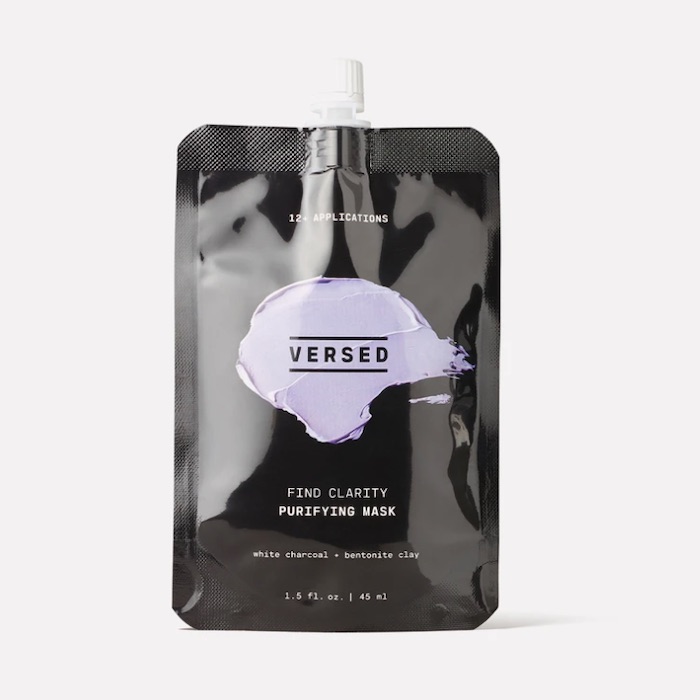

Salicylic acid belongs in the acne-fighting hall of fame, as it has a long history of being used topically to fight breakouts. Here’s what you need to know: it’s a BHA, or beta-hydroxy acid, that exfoliates the same way as AHAs, or alpha-hydroxy acids. However, it’s even more effective for treating acne due to its chemical make-up. Take it from board-certified dermatologist Dr. Geeta Yadav, “Because salicylic acid is oil-soluble, it can penetrate the skin at a deeper level and unclog pores of all the dirt, debris, and irritants that can cause acne—particularly blackheads and whiteheads.”
Although Dr. Yadav says salicylic acid is great for unclogging pores and promoting exfoliation, she cautions that it can be drying and irritating. Translation? Go easy and don’t overuse it.


Benzoyl peroxide is another acne-fighting mainstay ingredient that’s been used for decades. It differs from salicylic acid in that it doesn’t exfoliate the skin. Instead, it provides powerful antibacterial and anti-inflammatory properties. In fact, it directly targets the bacteria that cause acne to erupt in the first place—P. acnes bacteria (learn more about the difference between benzoyl peroxide and salicylic acid, here).

If there’s one ingredient dermatologists, estheticians, and editors talk about most, it’s probably retinol. It only makes sense, as this buzzy ingredient does a little bit of everything. “Retinol is a form of vitamin A and type of retinoid that is available over the counter,” Dr. Yadav says. “While probably most known for increasing collagen, decreasing fine lines, and improving skin’s texture, it is also a wonderful ingredient for preventing acne. Retinol helps to unclog pores and promotes healing via skin cell turnover, a dynamic duo when it comes to targeting a source of breakouts.”


You may have heard people refer to backuchiol as a natural alternative to retinol. According to Dr. Yadav, there’s some truth to that. “While retinol and retinoids are wonderful ingredients, they can be very drying and/or irritating for some, particularly those with already sensitive skin. Bakuchiol is a gentler, more soothing, plant-based alternative to retinol that has a long history in the world of Ayurvedic medicine. Like retinol, bakuchiol helps to unclog pores and fight breakouts, but it also has anti-inflammatory and anti-bacterial attributes that help to prevent acne from occurring in the first place.”
It’s also found in Versed’s Press Restart Gentle Retinol Serum ($22). The bakuchiol used is CITES (Convention on International Trade in Endangered Species of Wild Fauna and Flora) certified, meaning its use doesn’t negatively impact this precious plant species’ survival.

Not only does tea tree oil provide a refreshing, herbal scent to most products it’s included in, but it also has some serious acne-fighting powers. “Tea tree oil is an essential oil that comes from the leaves of the Melaleuca tree and has been used as traditional medicine for centuries,” Dr. Yadav says. “Known for its healing powers, tea tree oil has bacteria-fighting properties that make it ideal for relieving and preventing acne.”


“Witch Hazel is a topical astringent made from the leaves and bark of the Hamamelis Virginiana shrub,” Dr. Yadav explains. “In addition to drying and oil-zapping effects, witch hazel contains several compounds and antioxidants with anti-inflammatory and bacteria-killing properties—all keys to relieving acne.”


Another wonder ingredient, niacinamide is lauded for its brightening, pore-minimizing, elasticity-boosting, and calming powers. “Also known as nicotinamide, niacinamide is a form of vitamin B-3 and has been a popular ingredient in dermatology offices for many years,” Dr. Yadav says. “It contains anti-inflammatory properties and decreases oil production in a gentle, non-irritating way, making it ideal for those with acne and sensitive skin.”


Zinc might not be as buzzy as other ingredients on this list, but that doesn’t mean you should overlook it. Take it from Dr. Yadav. “Zinc is a mineral and an essential nutrient that everybody needs. Widely known for its cold-fighting abilities, zinc is also a great treatment for mild acne. Available in both topical and ingestible forms, zinc is anti-inflammatory, reduces oil production, and can aid in killing breakout-causing bacteria. I recommend oral zinc for my patients with an acne-like condition called hidradenitis suppurativa where acne appears in the folds of the skin.”

According to Dr. Yadav, sulfur is “a natural chemical element that is common in rocks and minerals, as well as in our own bodies!” Perhaps most known for its rotten-egg stench, it also happens to be a great skincare ingredient for those with mild-to-moderate breakouts of either acne or rosacea. Sulfur has a keratolytic effect (softens/thins skin), which helps to exfoliate and remove dead skin cells, fight bacteria, and reduce sebum.”


Here’s the thing—there is actually more than one type of clay. The first one we’re going to talk about is kaolin clay. “Kaolin is a soft, white clay that, in addition to skincare, has been used in China to create porcelain products for centuries,” Dr. Yadav explains. “Typically, in a mask format, kaolin helps to absorb excess oil and sebum, while also managing moisture levels, making it very gentle and suitable for even sensitive skin types.”


The other type of clay we’re going to talk about is bentonite clay. “Another very old clay, bentonite forms when volcanic ash ages and contains many other important trace minerals, such as calcium, iron, zinc, and copper,” Dr. Yadav says. “Available in powders or masks, bentonite is known for healing infections and acne and absorbs dirt and oil.”

Next, 8 foolproof ways to ensure your skin reaches maximum potential this fall.
Powered by WPeMatico






